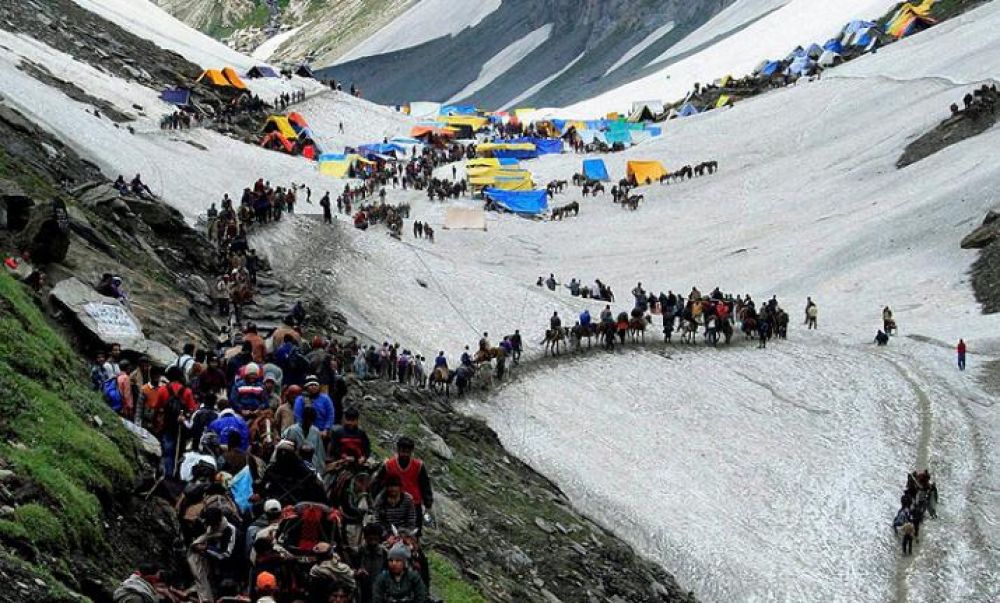

Kashmir, often referred to as 'Paradise on Earth', is not only famed for its breathtaking beauty but also for its spiritual significance. Among the most revered places in this majestic land is the Amarnath Temple, a shrine dedicated to Lord Shiva. Situated at an altitude of 3,888 meters and approximately 14 kilometers away from Baltal, the Amarnath cave is one of the holiest shrines in Hinduism.
The history of Amarnath Temple dates back to ancient times, with references found in various Hindu scriptures. According to beliefs, this is where Lord Shiva disclosed the secret of immortality, the Amar Katha, to his consort Goddess Parvati. The shrine houses an ice stalagmite which is revered by devotees as the symbol of Lord Shiva. The lingam waxes and wanes with the phases of the moon.
Tourism associated with the Amarnath temple can be traced back to 1850 when the Yatra, or pilgrimage, started receiving attention. However, the actual discovery of the cave is credited to a Muslim shepherd named Buta Malik in the 15th century. Over the years, this pilgrimage has gained immense popularity.
Baltal, located on the banks of the Sindh river, serves as a strategic base camp on the shorter route to the holy Amarnath cave. It is a small valley that offers mesmerizing vistas and is enveloped by snow-clad mountains. The development of this location into a tourist hub began as a result of the Amarnath Yatra, which sees thousands of pilgrims visiting each year during the months of July and August.
Baltal is also an adventurist's paradise offering a variety of activities like camping, trekking, and helicopter rides to the cave during the Yatra season. It serves as an alternative to the traditional Pahalgam trail, providing a faster, although steeper, route to the shrine.
In recent years, efforts have been made to extend the tourism season in Baltal and surrounding areas beyond the Yatra period. Ecotourism has gained popularity, with an emphasis on sustainable practices and conservation. Adventure tourism has also seen a rise with trekking, mountaineering, and white-water rafting becoming popular among visitors.
The Jammu and Kashmir administration and various travel agencies are now actively promoting off-season tourism with the aim of reducing the economic dependency on the Yatra months. Newer attractions and improved facilities are being developed to appeal to a wider audience.
Despite its popularity, the region faces several challenges, primarily concerning the environment and infrastructure. The massive inflow of pilgrims during the Yatra puts pressure on the fragile ecosystem. To counter this, authorities have implemented stricter regulations and initiated cleanup campaigns to preserve the sanctity and cleanliness of the area. The introduction of green toilets, waste management systems, and awareness programs highlight the commitment to sustainable tourism.
In conclusion, Baltal and the Amarnath Temple stand as testimonies to the blend of divine splendor and the raw beauty of nature. The history of tourism here is intricately linked to spirituality and devotion, while the evolving tourism trends point towards an inclusive and sustainable approach to welcoming visitors from around the globe. Through careful management and responsible travel, the mystical charm of this sacred site can be preserved for generations to come.